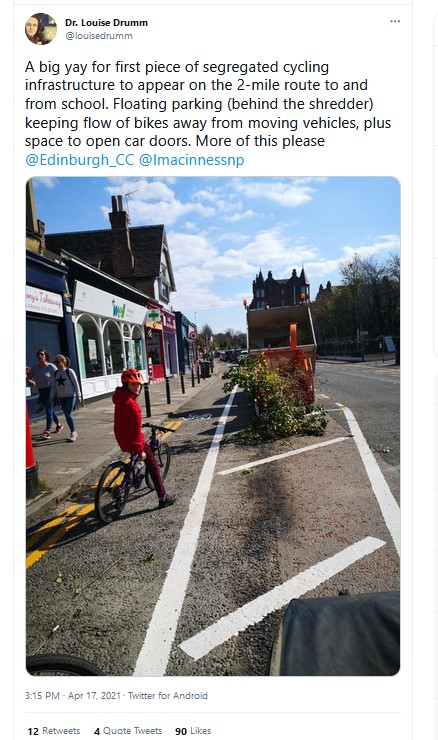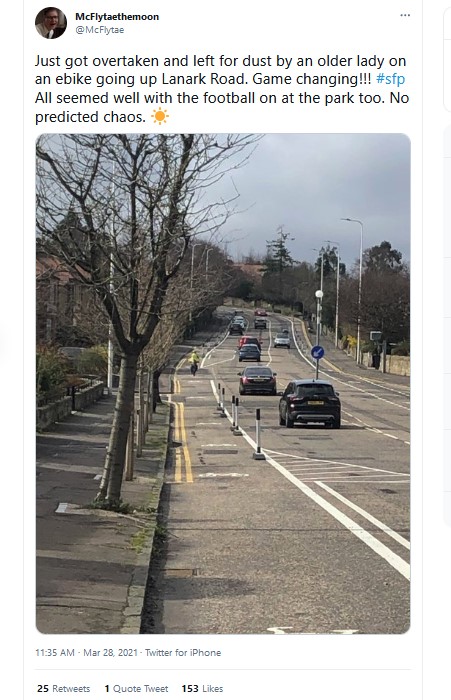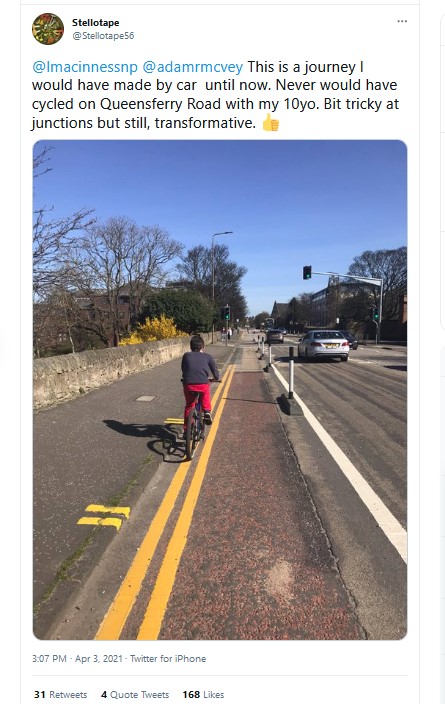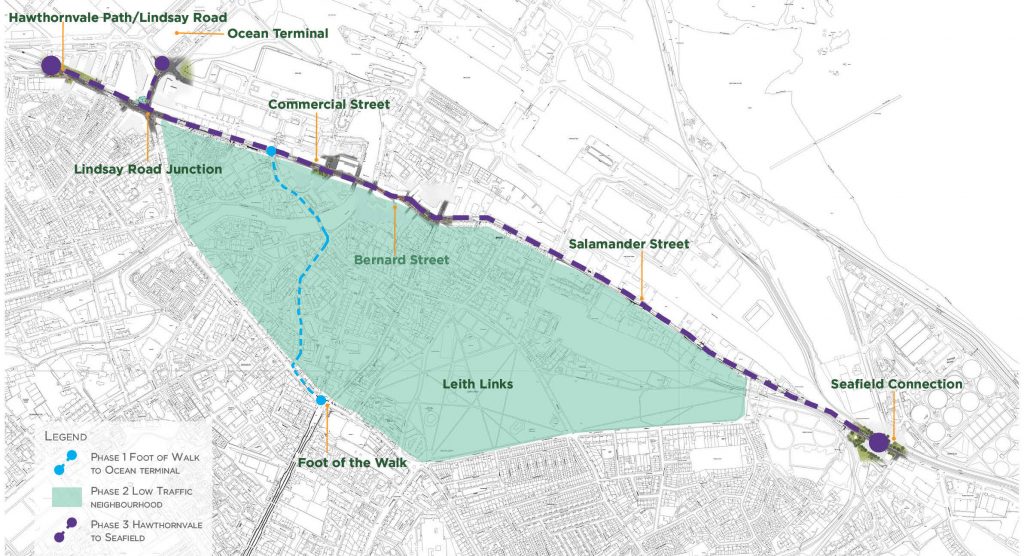What can we expect locally for bike use and wider sustainable transport? What will Spokes – and you! – need to support, oppose, provide, improve or highlight in order to speed up the move towards more sustainable and healthy places to live and get about? This article outlines a few of the topics which we expect to matter in 2024, locally and for cycling in particular (though there’s a lot we’ve not had time to include).
Updates, early Jan:
- The Council appears to be taking the changed law on pavement-parking and double-parking more seriously than most Scottish Councils, with no exemptions, extensive pre-publicity including identifying difficult streets and contacting households, and enforcement promised from 29 January / Press release / Council info & reporting page / Great example of innovative targeted pre-publicity
- Transport Convener Cllr Scott Arthur new year blog
At the end of January we should get a clearer idea what to expect for Edinburgh’s transport future, including, for cycling, the critical question of main road infrastructure. The finalised Circulation Plan is due to be published, alongside finalised Active Travel and other Action Plans, then debated and voted on at the February 1st Transport Committee.
Spokes hopes to hold a public meeting [likely to be 29 Feb] to discuss the outcome.
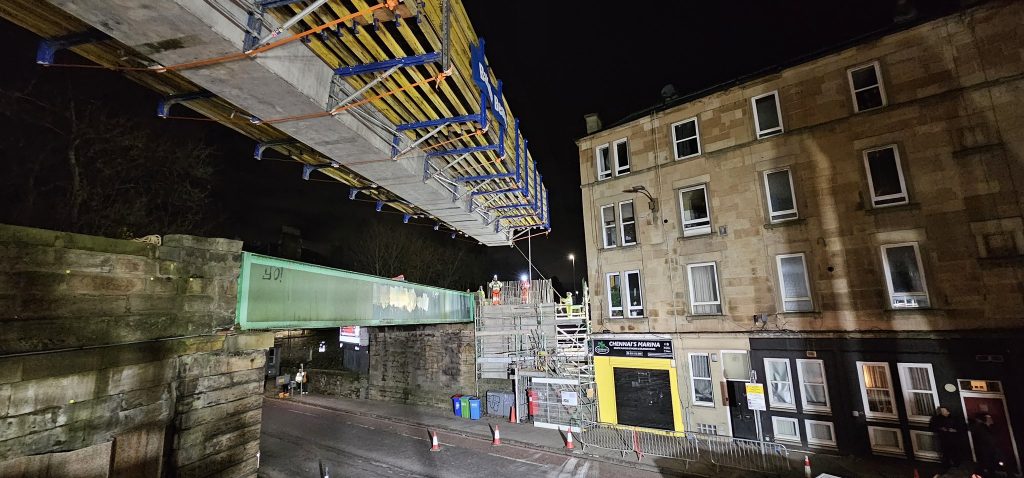
Circulation Plan and accompanying Action Plans
The Circulation Plan had a very early draft in late 2022, which was then consulted on, along with the action plans, during 2023. The Plan is intended to define which transport modes will have priority on which roads – a huge issue, given competing modes and limited road widths in places – and to “deal with” rat-running in residential and school areas. It is intended to be the “strategic framework for all relevant investment programmes, including the major junctions review, the delivery of Low Traffic Neighbourhoods, the road and footways renewals programme and the citywide roll-out of School Streets.“
Cllr Scott Arthur, the Transport Convener outlined the rationale for the Plan, pointing out that Leith Walk shows what can happen when you try to squeeze too much into a given space – a fair point, though in our view the main problem in Leith Walk, as with the original line, was designing a tramline first, then trying to squeeze in everything else, rather than designing holistically from the start.
Spokes welcomed the concept of the Plan, but with potential significant concerns …
- the main cycle network must be open to all – including novices, families, the less confident, etc. The design and continuity of main road infrastructure is crucial here
- the plan must include physical measures (such as bus gates and modal filters) to achieve the Council’s 30% traffic reduction target and to make shopping and residential areas pleasant places in which to get about on foot and by bike
- delivery timetable – when will we see what on the ground? The Council’s record on delivery leaves much to be desired [e.g. CCWEL, George Street, Canal to Meadows]. Two years into the previous Council we had the excellent Transformation Policy – but little of it was enacted. Will we have to say similar for the new Council’s Circulation Plan?
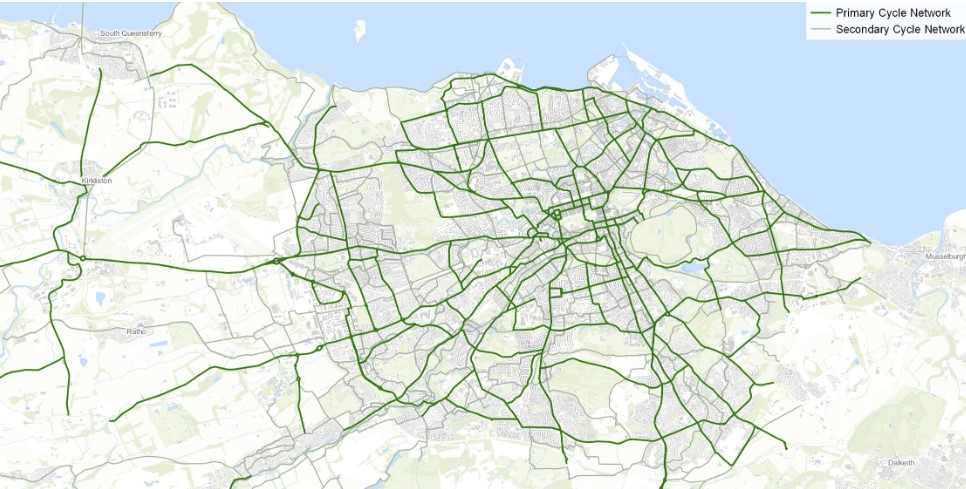
Until we see the full Plan, we won’t know how well it lives up to these questions. As SW20Ed put it last year, the opportunity is huge; the risk is huge. Basically, if we do see action, the Council could be on the way to a citywide cycle network open to all; or it could cement into place a disjointed series of routes, with some sections of high quality and others suitable only for the more confident.
Interestingly, Glasgow City has very recently published what appears to be a similar plan. It will be instructive to compare the two and, as time passes, how effectively and speedily they are implemented.
Tramline uncertainties
A further big unknown is the future (or not) of north-south tram, which may depend in part on government funding decisions. How will this major unknown be accounted for in the Circulation Plan?
If tram extension goes ahead (which Spokes supports in principle) there will be major implications for cycling. North to Granton, will it be onroad or along the Roseburn corridor and, if the latter, with what quality of adjacent cycleroute? South to the Bioquarter and Infirmary, will it use the super-narrow Bridges corridor, or Lothian Road (already planned for traffic reduction and major walk and cycle improvements), the Pleasance, or The Mound-Meadows corridor (where a major cycle facility is already planned)? And, for any onroad routes, will the Council use the Dutch approach of a holistic ‘transport corridor’ or will it follow its first two precedents of ‘design a tramline then try to fit in everything else.’ Literally hundreds of bike tramline crashes, some with life changing injuries, and a death, have been associated with, in particular, Edinburgh’s original tramline layout [more documents here].
The new(ish) council
How does the minority Labour council compare to the previous SNP/Lab coalition, as regards active travel? In our view, very similar on cycling – generally positive, but disappointingly slow, and with a few negative decisions – and somewhat more positive on walking (and on bus).
It is important to keep in mind the minority nature of the council. The Labour administration can certainly not do whatever it wants, unlike the previous formal SNP/Labour coalition. The current makeup, after a couple of changes in 2023, is in the table below.
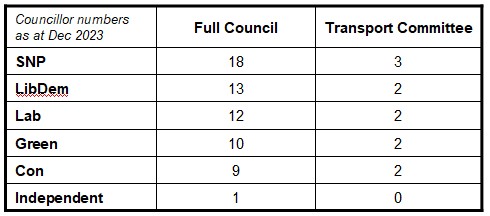
Labour, who run the administration, have just 12 of the 63 council seats, and on the Transport Committee just 2 places out of 11. Whilst Labour chairs nearly all Committees, including Transport, decisions are made by Committee votes, not by the Convener. Conveners are, of course, in constant communication with officers, and are the go-to for the press, and so have a degree of control over the agenda – but any party can make things happen if they can come up with proposals which win majority votes.
For example, on the crucial Workplace Parking Levy (WPL) vote in September 2023, the Conservatives voted ‘No’, Labour voted to delay for further assessments of low-paid worker mitigations, whilst the LibDems combined with SNP and Greens to win the vote and instruct officers to set up a public consultation. Thus whilst the minority Labour adminstration will attempt to implement its manifesto, it cannot do so where enough other parties combine to propose something different – and indeed the Council may implement policies not in the Labour manifesto.
In another case the LibDems and Conservatives teamed up to remove the Manse Road bus gate. but were defeated by a combined Labour/SNP/Green vote. There have been many other examples of issue-by-issue party decision-making. This is how a minority administration works, as opposed to a formal coalition with an overall majority, which can decide whatever it wants.


So, how does the new council compare with the previous one, specifically on cycling and in terms of what we see on the ground, as opposed to plans. So far, it seems fairly similar…
| Topic | SNP/Lab coalition 2017-2022 | Lab minority 2022-> |
| Major schemes, actual construction | Started CCWEL | Started Roseburn-Canal |
| Bike parking & hangar storage | Ongoing implementation | Ongoing implementation |
| Covid ‘Spaces for People‘ onroad schemes | Installed rapidly under government covid temporary TTRO rules. Many schemes (examples in pictures below) | Nearly all retained, to come under experimental ETRO rules once legalities resolved |
| Covid scheme removals (these lists are probably not complete) | Forrest Rd*; Princes St bus gate; Warriston Road; Braid Rd reopening; Morningside Road; also scrapped most town centre pedestrian covid schemes | Bank Street*; Drum Brae North (then partly reinstated); Braid Rd (further changes); Silverknowes Road North |
| Public bike hire | Just Eat scheme closes | Discussions continue … |
| LTN | Work started on the Corstorphine Connections ETRO experiment | Work started on Leith Connections; Defeated moves to neuter Corstorphine ETRO |
Some typical ‘Spaces for People’ schemes
LTN – Leith Connections
Leith Connections is a 3-part project including
- phase 1: cycleroute from Foot of Walk to Ocean Terminal, avoiding the tramlines. Construction now due to start in 2024, although initially it had been intended to open the route at the same time as the tram!
- phase 2: Leith LTN, road closures, bus gate, planting, seating, etc. Most now in place under an (experimental) ETRO order
- phase 3: cycleroute connecting North Edinburgh Network to Portobello – plans still at design stage.
Scottish Government – 2024 disappointment
- Our article above is primarily about local policies, developments and activities, but they all fall within the context of Scottish Government policies, which greatly affect what councils can do, and what restrictions are placed on them
- The Scottish Government’s draft budget for 2024, published 19 December 2023, despite a modest rise (£31m) in the active travel budget line, was a big disappointment for sustainable transport in general, with cuts for rail (£80m), Future Transport Fund (£63m) and Support for Sustainable Travel (£3m). Taken together this represents a net cut of around £115m for sustainable transport, alongside a rise of £210m in the trunk roads budget
- The £31m AT increase is way, way below what had been consistently promised by Ministers. Furthermore, of the £31m, only £7m is for infrastructure, the other £24m going to ‘behaviour change.’
- The budget more or less confirmed what was already becoming increasingly apparent – the government appears to be backpedaling quietly on its *commitment* to a 20% reduction in car-km by 2030. From the moment the commitment was announced in December 2020, Spokes has emphasised how tough this will be to achieve, and how essential was urgent action on car restraint, not solely relying on boosting alternative modes. A draft ‘route map’ on implementing the commitment was belatedly published in Jan 2022, but it postponed any decisions on car demand management until at least 2025. Now, two years later, January 2024, the final route map has still not been published, and leaks strongly suggest that Ministers are unhappy, for political reasons, with the necessary demand management measures involving road-user charging of one sort or another. The 20% car-km reduction ‘commitment‘ is increasingly being referred to just as a ‘target‘ and, now, we have the draft 2024 budget cutting sustainable transport cash whilst increasing the trunk roads budget.
What you can do
- Contact your councillors and/or MSPs about issues in this article. Find them at www.writetothem.com. Or: Edinburgh Council / Scottish Government. Send us any useful replies. Meeting your representative(s) in person or online when you feel strongly about something can be even more useful than email – try it!
- Join Spokes – it is certainly not necessary to be an ‘activist’ though we particularly need members with the time and interest to help in our responses to local and/or national consultations etc
- Retweet our tweet of this article.

